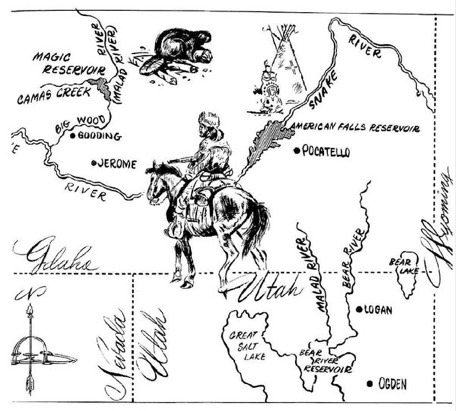Dublin Core
Title
Description
Throughout the nineteenth century, Northern Utah’s Malad River was the site of a mysterious illness affecting fur trappers. Rumors about the water spread through camps by way of river names, cautioning others who camped along the water’s edge. French-speaking settlers and trappers named the waterway La Rivière aux Maladie, or the Sickly River. Better known as the Malad River, the river’s name warned other campers to avoid eating wildlife from its water.
In 1824, fur trappers from the Hudson’s Bay Company camped along northern Utah’s Big Wood River. The men spent their first night eating hunted beaver. Just a few hours after eating dinner, members of the camp were suddenly wrenched with terrible stomach cramps. A witness described their misery graphically, recalling that the weak and speechless men suffered great pains that caused them to froth at the mouth.
Unknowingly, the men had eaten beaver that, just hours earlier, lived in and ate from the Malad River. It wasn’t long before the men pinpointed the cause of their agony to the beaver meat that they had all consumed for dinner, which they remarked was “sweeter” than usual. Theirs was not the first group of trappers to fall victim to the “poisoned beavers of Malad River,” and they certainly were not the last. Despite rumors about the poisonous beaver, hunger pressured hunters into eating the tainted meat well into the 1860s.
The exact cause of the fur trappers’ illness remains unknown. Using firsthand reports of the symptoms, researchers generally agree that the beavers were likely eating poisonous plants or roots such as hemlock or fool’s parsley. These plants are plentiful in the area and ingestion can cause symptoms mirroring those described by the original 1824 poisoning. But, this was not known at the time so the helpful naming of the Malad River served to warn settlers and travelers to avoid food from near the water source.
Creator
Source
_______________
See “Poisonous Beavers” Made Trappers Sick in Northern Utah, The History Blazer, (April 19th, 1995); Wharton Gaul, “The Poisonous Beaver of Sick River,” Utah Historical Quarterly 30, no. 3 (July 1962): 263-71; Frederick M. Huchel, The History of Box Elder County (Salt Lake City: Utah State Historical Society Box Elder County Commission, 1999), 307-8; Idaho Historical Marker, “History of the Malad River,” Waymarking, June 6, 2011.

